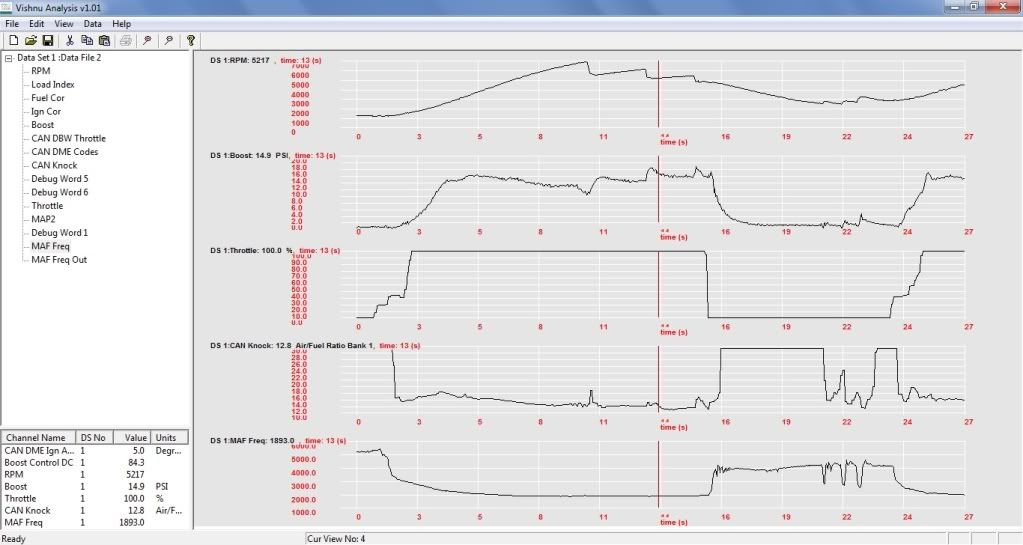Abarth wrote:Wastegate operation of such optimized cars is, in "normal" duty cycle, not that often, thus an MGU-H would be of relative importance in road cars.
Transient response and start of car, a problem with such downsized engines, can be bettered with an MGU-K (mild hybrid.
I think we may be speaking past each other here, but I'm confused when you say the wastegate on a road car is not used that often. I drive a BMW 135i, N55 engine, which has a single twin-scroll turbo on an inline 6. The turbo is relatively small, and the twin-scroll means it spools fairly fast. That said, in the ECU there is a boost target and when boost reaches/exceeds target, the wastegate is opened. I couldn't find a datalog of the wastegate actuation itself, but here is an example.

Notice that as the engine revs, boost builds up to a point, and is then managed. Also notice that when the knock sensor spiked, boost was pulled by the ECU (via opening the wastegate of course).
The magic of the MGU-H on a road car is that you can size the turbo appropriately for top-end breathing, but then use the MGU-H to keep it spooled. Ever drive a Supra with a huge turbo like a T78? The thing takes forever to spool, but once it does, look out!




